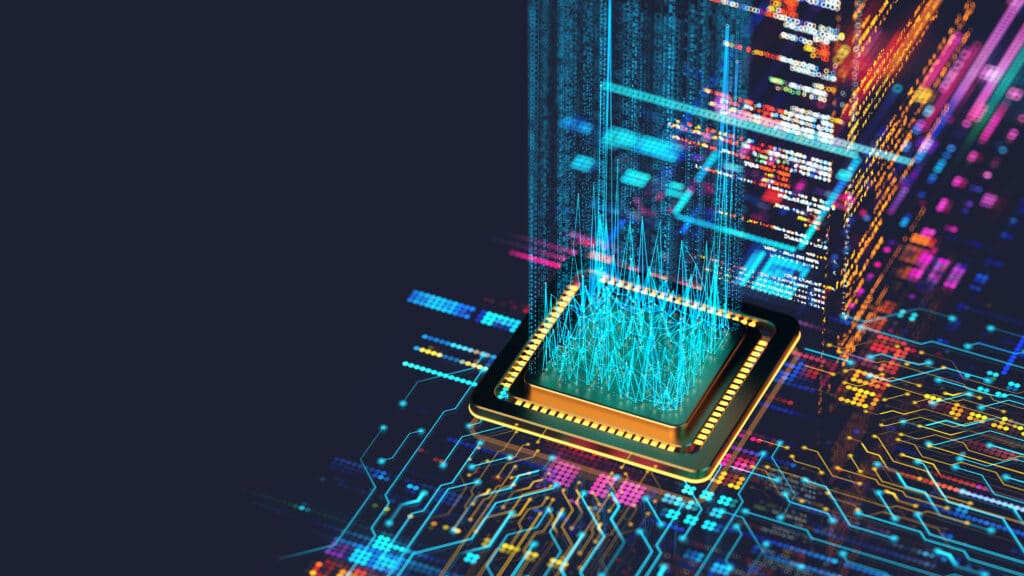Six holistic design principles of edge computing

By Martin Ryder, channel sales director Northern Europe at Vertiv
The data centre industry is at a critical phase of development. With organisations working to adopt artificial intelligence (AI) – Gov.UK said that British AI companies alone now contribute £11.8 billion to the UK economy, double the amount in 2023 – edge data centres could hold the key. They are smaller than centralised facilities, located near users and devices, overcoming latency challenges and accelerating AI deployments through enabling low-latency, high-bandwidth data processing. But there needs to be rapid innovation in edge data centre design to meet growing demand while managing rising power needs.
A holistic approach will help to create the required critical digital infrastructure to run complex AI applications. Paying close attention to the three cornerstones of power, cooling and cabling will allow operators to unleash innovation and AI’s full potential. Failing to take a holistic approach could result in failed IT edge deployments and stifled innovation, limiting AI’s transformative impact.
The six holistic design principles
1. Define and understand the IT load
The IT load is the processing power a data centre requires. This will vary depending on the application, purpose and industry. Therefore, it is essential to define IT load based on what the AI application is trying to achieve and the specific use cases.
To determine the IT load, operators will need to understand the type of AI model being implemented, the data requirements and the speed at which the system must respond. It’s important to build a buffer to help accommodate growth and evolving demands. This will help operators to match the available power supply, define cooling requirements, and set cabling standards that deliver the required speed, with room for growth.
2. Location, location, location
Edge data centre sites are increasingly selected based on their proximity to alternative energy sources, such as solar farms, wind turbines, geothermal installations, and hydroelectric facilities, to minimize reliance on fossil fuels. This strategic placement not only reduces carbon emissions and operational costs, but also enhances energy security and regulatory compliance in jurisdictions mandating net-zero operations. Furthermore, the inherent opportunity for waste heat recovery transforms these sites into valuable assets for surrounding communities. Excess thermal energy from servers can be captured via heat exchangers and repurposed for district heating systems, greenhouses, aquaculture, or even residential warming. This dual benefit of low-cost, renewable power and heat monetisation directly boosts site viability.
3. Understanding regulations
With IT load and location defined, operators can build a picture of the regulations with which the data centre must comply. The most important regulations concern sustainability, including requirements to meet certain Power Usage Effectiveness (PUE) standards, water usage effectiveness (WUE), energy reuse and energy consumption from renewable energy sources. These will all influence the design decisions for power, cooling and cabling to support data centres efficiency while meeting the required IT load.
4. What design elements can be standardised?
With the IT load defined and knowledge of regulations, infrastructure designers can develop reference designs for power, cooling and cabling solutions. The standardisation of certain aspects of design can speed up builds through pre-integration, prefabrication, and flexible designs.
AI inferencing and model training are driving rack densities and power cooling loads to new extremes leading to the need for designs to be more adaptable and trusted so they can be repeated across projects. Adopting standardised frameworks, such as those from Open Compute Project (OCP), can also help to promote uniformity and efficiency across designs.
5. Reuse of resources
The introduction of alternate energy sources and waste heat reuse should be central to every edge data centre development. Some facilities are now channeling waste heat to warm homes, offices, greenhouses or even for aquaculture. There is also a growing trend of water-positive data centres that aim to return more water than consumed. A commitment to efficiency and circularity minimises waste while maximising resource efficiency, allowing edge data centres to use power and resources multiple times.
6. Cabling as a buffer
The importance of high-quality cabling is often overlooked despite connectivity being a vital element for any data centre. AI applications draw a lot of power and generate heat, which strains cables and exposes poor-quality materials, leading to performance issues. Therefore, best practice must be followed.
Firstly, operators should have detailed, granular cabling standards for each data centre build, covering everything from containment to testing. Secondly, coordinate early with third parties to align cabling infrastructure with power, cooling, and security requirements to reduce bottlenecks and uphold high standards. Finally, invest in high-quality cabling, leaving space to grow and enable higher performance capabilities as technological enhancements push the bandwidth and latency capacity up.
Edge data centres can play a key role in accelerating AI, but poorly designed infrastructure can lead to higher costs and performance issues. Deploying effective edge data centres requires operators to take a holistic approach to design. With the right solutions, AI deployments stay scalable, reliable, and efficient, reducing latency and driving innovation.
About the author
As channel sales director for Vertiv, Martin Ryder helps organisations to power their mission-critical applications. He leads the Northern Europe channel team leveraging Vertiv’s large IT channel portfolio of products, including industry leading brands such as Liebert, Geist and Avocent, which span from all sizes of power protection and thermal management; to IT management; to racks, enclosures and distribution to end-to-end services.
Ryder’s previous role within Vertiv saw him leading the Light Industrial sales team, predominantly working with transportation and manufacturing accounts. He has been with the company since 2004.
Article Topics
AI data centers | data center design | edge computing | low latency | sustainable infrastructure | Vertiv


Comments